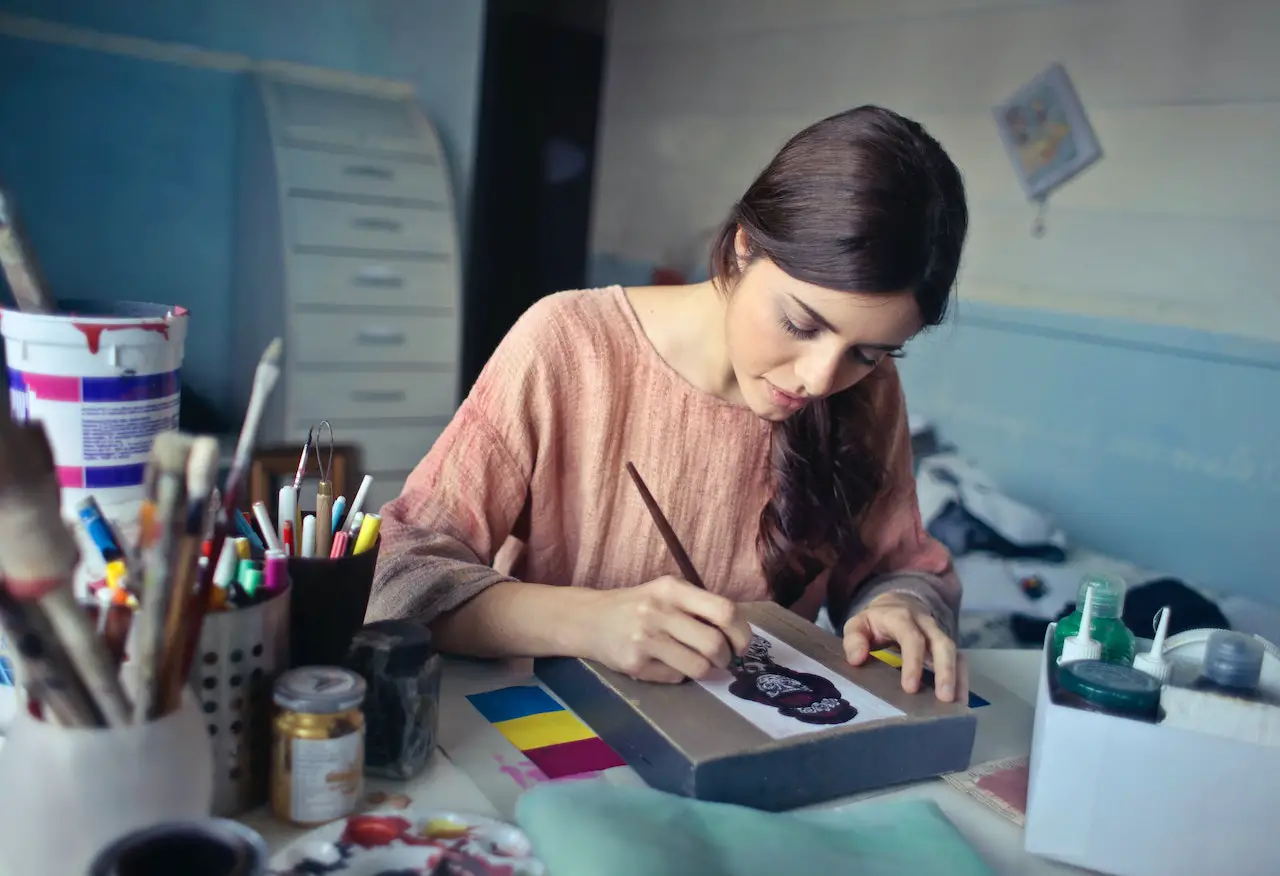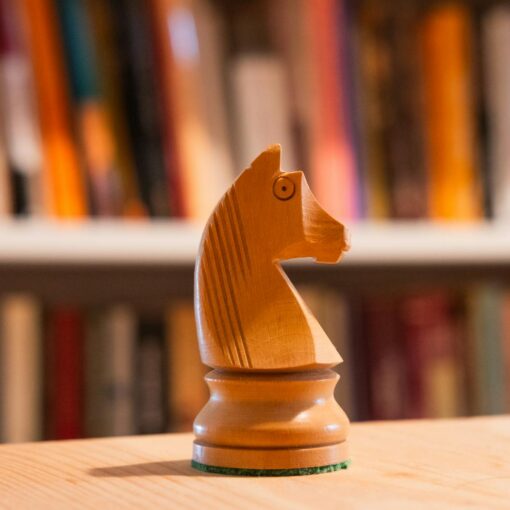Creativity is a valuable asset in today’s world, and many people strive to unleash their creative potential. Associative thinking is a technique that can help individuals tap into their creativity and come up with innovative ideas. This method involves connecting seemingly unrelated concepts and ideas to generate new insights and solutions.
Associative thinking is a skill that can be learned and developed through practice. By allowing the mind to free associate and link up ideas automatically, individuals can break free from conventional thinking and explore new avenues. This technique is not limited to artists, writers, or musicians; it can benefit anyone in any industry. Studies have shown that associative thinking can foster creativity and lead to more innovative solutions to problems.
In this article, we will explore various associative thinking techniques that can help individuals unleash their creativity and come up with fresh ideas. From brainstorming exercises to mind mapping and visual thinking, we will delve into different methods that can help individuals break free from conventional thinking and tap into their creative potential. By the end of this article, readers will have a better understanding of how associative thinking can help them become more creative and innovative in their personal and professional lives.
Understanding Creativity
Creativity is the ability to generate new and original ideas, to come up with innovative solutions, and to produce unique and valuable outcomes. It is a multifaceted concept that involves cognitive, emotional, and social processes. Creativity is not limited to artistic or musical expressions, but it can be applied to any field or domain.
Role of Neuroscience in Creativity
Recent research in neuroscience has shed light on the neural mechanisms underlying creativity. Studies have shown that creative thinking involves the activation of multiple brain regions, including the prefrontal cortex, the temporal lobe, and the parietal lobe. These brain regions are responsible for various cognitive processes, such as attention, memory, perception, and language.
Moreover, neuroscience has revealed that creativity is not a fixed trait, but it can be developed and enhanced through various techniques and interventions. For example, associative thinking, which involves connecting seemingly unrelated ideas and concepts, has been shown to boost creativity by facilitating the generation of novel and diverse ideas.
In addition, research has shown that certain psychological factors can influence creativity, such as motivation, curiosity, openness to experience, and intrinsic interest. These factors can be fostered and nurtured through various practices, such as mindfulness, meditation, and positive psychology.
Overall, understanding the neural and psychological processes underlying creativity can help individuals unleash their creative potential and develop their innovative skills. By adopting associative thinking techniques and fostering psychological factors that promote creativity, individuals can enhance their ability to generate novel and valuable ideas, and to solve complex problems in innovative ways.
The Concept of Associative Thinking
Associative thinking is a type of thinking that involves connecting different concepts together to form new ideas. It is a fast, subconscious process that can involve memories, emotions, and physical sensations. Associative thinking is a key component of creativity and can help individuals generate unique and innovative ideas.
Associative Thinking Vs Traditional Thinking
Traditional thinking involves a linear and logical process of problem-solving. It follows a step-by-step approach where the problem is identified, analyzed, and solved using a set of predefined rules and procedures. On the other hand, associative thinking is a non-linear process that allows individuals to make connections between seemingly unrelated concepts.
Associative thinking is often described as a “free-flowing” process that allows for more creativity and innovation. It encourages individuals to think outside the box and come up with unique solutions to problems. Traditional thinking, on the other hand, is more structured and tends to follow established rules and procedures.
In contrast to traditional thinking, associative thinking allows individuals to consider the context in which a problem exists. It encourages individuals to think about the broader picture and consider how different concepts and ideas might be connected. This can lead to more holistic and innovative solutions to problems.
Overall, associative thinking is a powerful tool for unleashing creativity and generating new and innovative ideas. By allowing individuals to make connections between seemingly unrelated concepts, it can help individuals to think more creatively and come up with unique solutions to problems.
Enhancing Creativity Through Associative Thinking
Associative thinking is a thought process that connects seemingly unrelated ideas, thoughts, or concepts in your mind, leading to new and innovative ideas. This type of thinking allows you to look at things from different perspectives, which is a critical element in creative problem-solving. In this section, we will explore the process of associative thinking and provide you with some exercises to help you enhance your creativity.
The Process of Associative Thinking
The process of associative thinking involves linking concepts from memory to generate new ideas. It is a search process that operates on a semantic memory network structure. This type of thinking is not restricted by conventional logic or reason. Instead, it is free-flowing and allows your mind to explore new ideas and perspectives, even if they seem unfamiliar or uncomfortable.
To enhance your associative thinking, you need to cultivate curiosity and openness. Be willing to explore new ideas and perspectives, even if they seem unfamiliar or uncomfortable. Cross-pollinate ideas and fields. This means that you should look for connections between seemingly unrelated ideas and concepts. This will help you generate new ideas and perspectives.
Associative Thinking Exercises
Here are some exercises to help you enhance your associative thinking:
- Mind Mapping: Mind mapping is a technique that involves creating a visual representation of your ideas. Start with a central idea and branch out to related ideas. Use colors, symbols, and images to make your mind map more engaging.
- Random Word Association: This exercise involves selecting a random word and then associating it with another word. For example, if the random word is “tree,” you might associate it with “leaves,” “branches,” or “shade.” This exercise helps you generate new ideas by making connections between seemingly unrelated words.
- Reverse Thinking: Reverse thinking involves looking at a problem from a different perspective. Instead of asking “how can I solve this problem,” ask “how can I make this problem worse?” This exercise helps you think outside the box and generate new ideas.
- Analogies: Analogies involve comparing two things that are seemingly unrelated. For example, you might compare a computer to a human brain. This exercise helps you generate new ideas by making connections between seemingly unrelated concepts.
In conclusion, associative thinking is a powerful tool that can help you enhance your creativity. By cultivating curiosity and openness and practicing exercises like mind mapping, random word association, reverse thinking, and analogies, you can unleash your creativity and generate new and innovative ideas.
The Role of Emotions and Ego
Creativity is a complex process that involves a combination of cognitive, emotional, and motivational factors. Emotions and ego play a crucial role in the creative process, and understanding how to manage them can help unleash your creativity. In this section, we will explore the role of emotions and ego in creativity and provide some tips for managing them.
Managing Ego
Ego can be both a friend and a foe of creativity. On the one hand, a healthy ego can provide the confidence and self-assurance necessary to take risks and pursue creative endeavors. On the other hand, an overinflated ego can lead to arrogance, which can hinder collaboration and stifle creativity.
To manage your ego, it is important to remain humble and open-minded. Recognize that you do not have all the answers and that there is always room for growth and improvement. Be willing to listen to feedback and criticism, and use it as an opportunity to learn and grow.
Managing Emotions
Emotions can be a powerful source of inspiration and motivation for creativity. Positive emotions such as joy, excitement, and curiosity can fuel the creative process, while negative emotions such as anger, frustration, and anxiety can provide the impetus for change and innovation.
However, emotions can also be a source of bias and can cloud our judgment. To manage your emotions, it is important to cultivate emotional intelligence and self-awareness. Recognize your emotional triggers and learn to regulate your emotions effectively. Practice mindfulness and meditation to help you stay centered and focused.
In conclusion, managing your ego and emotions is essential for unleashing your creativity. By remaining humble, open-minded, and emotionally intelligent, you can tap into your creative potential and produce innovative and inspiring work.
Influence of Environment on Creativity
The environment plays a significant role in unleashing creativity. A conducive environment can stimulate creativity, while a non-conducive environment can stifle it. The physical environment can influence creativity in many ways, such as lighting, color, sound, and temperature. The surrounding environment, including nature, can also influence creativity.
Creating a Conducive Environment
Creating a conducive environment is essential for unleashing creativity. Here are some ways to create a conducive environment:
- Lighting: Adequate lighting is essential for creativity. Poor lighting can cause eye strain and headaches, which can hinder creativity. Natural light is the best option, but if that is not possible, use soft lighting that is easy on the eyes.
- Color: Color can influence mood and creativity. Bright colors can stimulate creativity, while muted colors can have a calming effect. Use colors that inspire creativity, such as blue, green, and yellow.
- Sound: Sound can affect creativity. Some people work best in complete silence, while others prefer background noise. Experiment with different types of music and sounds to find what works best for you.
- Temperature: Temperature can affect creativity. A comfortable temperature can enhance creativity, while an uncomfortable temperature can hinder it. Keep the temperature at a comfortable level.
- Surrounding: The surrounding environment can impact creativity. Being in nature can stimulate creativity. Surround yourself with inspiring objects, such as art, books, and other creative works.
- Culture: The culture of the environment can also influence creativity. A culture that values creativity and innovation can inspire creativity. Encourage creativity by promoting a culture that values it.
- Diversity: Diversity can also influence creativity. Exposure to different cultures and perspectives can stimulate creativity. Encourage diversity in the environment to promote creativity.
In conclusion, creating a conducive environment is essential for unleashing creativity. The physical environment, surrounding environment, culture, and diversity can all influence creativity. Experiment with different environmental factors to find what works best for you.
Importance of Reading and Curiosity
Reading is one of the most effective ways to broaden your knowledge and creativity. It exposes you to different ideas, cultures, and perspectives, which can help you develop new ways of thinking and approaching problems. Reading can also help you improve your vocabulary and communication skills, which are essential for effective creative expression.
Fostering Curiosity
Curiosity is a key ingredient in unleashing your creativity. It is the desire to learn and understand more about the world around you. Curiosity can help you generate new ideas and approaches to problem-solving by encouraging you to ask questions and explore different possibilities.
One way to foster curiosity is to read widely and diversely. By exposing yourself to different genres, topics, and authors, you can expand your horizons and challenge your assumptions. You can also try to approach familiar topics from different angles, seeking out new information and perspectives.
Another way to foster curiosity is to cultivate a sense of wonder and awe. Take time to appreciate the beauty and complexity of the world around you. Look for patterns and connections in nature, art, and science. By cultivating a sense of wonder, you can tap into your innate creativity and generate new ideas and insights.
In conclusion, reading and curiosity are essential for unleashing your creativity. By broadening your knowledge and fostering your curiosity, you can develop new ways of thinking and approaching problems, generate new ideas and insights, and express yourself more effectively. So, make time for reading and cultivate your curiosity to unleash your full creative potential.
Meditation and Daydreaming
Benefits of Meditation
Meditation is a technique that has been used for centuries to calm the mind and improve focus. It involves sitting quietly, focusing on your breath, and letting your thoughts drift by without judgment or attachment. Meditation has been shown to have numerous benefits, including reducing stress and anxiety, improving sleep, and increasing feelings of well-being.
In terms of creativity, meditation can be a powerful tool for unlocking your subconscious mind. By quieting the chatter of your conscious mind, you can tap into the deeper, more intuitive parts of your brain. This can lead to new ideas and insights that you might not have otherwise considered.
The Power of Daydreaming
Daydreaming, or letting your mind wander, is often seen as a waste of time. However, research has shown that daydreaming can actually be beneficial for creativity. When you let your mind wander, you allow your brain to make new connections between seemingly unrelated thoughts and ideas. This can lead to breakthroughs and new insights.
In fact, daydreaming has been shown to activate the default mode network (DMN) in the brain. This network is responsible for internal thought processes, such as daydreaming and mind-wandering. When the DMN is active, the brain is able to make connections between different areas of the brain, leading to new insights and ideas.
Combining meditation and daydreaming can be a powerful way to unleash your creativity. By meditating regularly, you can quiet your conscious mind and tap into your subconscious. Then, by letting your mind wander during the day, you can make new connections and generate new ideas.
Remember, creativity is not just about coming up with new ideas, but also about being open to new possibilities and perspectives. By cultivating a regular meditation practice and allowing yourself to daydream, you can expand your mind and unlock your full creative potential.
Challenging Perspectives and Debates
Challenging perspectives and debates are essential for creativity. It is through these discussions that we can expand our viewpoints and generate new ideas. However, it is important to approach debates with an open mind and a willingness to consider different perspectives.
The Art of Healthy Debate
Debating is not about proving who is right or wrong, but rather about exploring different perspectives and ideas. It is important to approach debates with respect for others and their opinions. Here are some tips for engaging in healthy debates:
- Listen actively: Listen to what the other person is saying without interrupting or formulating a response in your mind.
- Ask questions: Ask questions to clarify their perspective and to gain a deeper understanding of their viewpoint.
- Avoid personal attacks: Focus on the ideas being presented rather than attacking the person presenting them.
- Be open-minded: Be willing to consider different perspectives and change your own viewpoint if necessary.
- Use evidence: Support your arguments with evidence and facts rather than relying on emotions or personal beliefs.
Challenging perspectives can also help to break down mental barriers and spark creativity. By questioning assumptions and challenging traditional ideas, we can generate new and innovative solutions.
In conclusion, healthy debates and challenging perspectives are crucial for unleashing creativity. By approaching debates with an open mind and a willingness to consider different viewpoints, we can expand our horizons and generate new ideas.
The Role of Teams and Leaders
When it comes to unleashing creativity, the role of teams and leaders is crucial. Teams can help generate more ideas and provide diverse perspectives, while leaders can create an environment that fosters creativity and supports the team’s efforts.
Leading Creative Teams
To lead a creative team, leaders must first understand the importance of creativity in achieving business success. According to an article on Forbes, creativity is essential in leadership because it allows leaders to come up with innovative solutions to problems, adapt to change, and stay ahead of the competition.
Leaders can encourage creativity in their teams by creating a culture that supports risk-taking, experimentation, and failure. They can also provide resources and opportunities for professional development, such as training programs, workshops, and conferences.
In addition, leaders can use techniques like brainstorming, mind mapping, and lateral thinking to help their teams generate more ideas and explore new possibilities. By providing guidance and support, leaders can help their teams tap into their creative potential and achieve their goals.
Overall, the role of teams and leaders is critical in unleashing creativity. By working together and creating a supportive environment, teams can generate more ideas and achieve greater success. Leaders who understand the importance of creativity and provide the necessary resources and guidance can help their teams reach their full creative potential.
Risk, Talent and Growth in Creativity
Creativity is a crucial element in any innovative process, and it requires a combination of risk-taking, talent, and growth mindset. The ability to think outside the box and find unconventional solutions to problems is a valuable skill that can lead to breakthroughs and advancements in any field.
Embracing Risks
One of the most significant barriers to creativity is the fear of failure. However, taking risks is an essential component of creativity. To unleash your creativity, you must learn to embrace risks and be willing to fail. Creative thinking involves exploring new ideas, taking chances, and pushing boundaries. By embracing risks, you can overcome the fear of failure and be more willing to try new things.
Nurturing Talent
Talent is an inherent ability, but it can also be nurtured and developed. To unleash your creativity, you must identify your strengths and weaknesses and work on developing your talents. This involves continuous learning, experimentation, and practice. Creative thinking requires a diverse set of skills, including problem-solving, critical thinking, and communication. By nurturing your talents, you can develop the skills necessary to think creatively and come up with innovative solutions.
Growth
Growth is a crucial component of creativity. To unleash your creativity, you must have a growth mindset, which involves a willingness to learn, adapt, and grow. This means being open to feedback, seeking out new experiences, and embracing change. Creative thinking requires continuous learning and growth, as well as a willingness to challenge assumptions and think outside the box.
In conclusion, creativity requires a combination of risk-taking, talent, and growth mindset. To unleash your creativity, you must be willing to take risks, nurture your talents, and embrace growth. By doing so, you can develop the skills necessary to think creatively and come up with innovative solutions.
Frequently Asked Questions
What are some techniques for enhancing creativity through associative thinking?
There are several techniques for enhancing creativity through associative thinking. One technique is to use mind mapping, which involves creating a visual diagram of ideas and concepts. Another technique is to use brainstorming, where you generate as many ideas as possible without judgment. You can also try free association, where you write down the first word that comes to mind and then use that word to generate more ideas.
How does associative thinking differ from linear thinking in terms of creativity?
Linear thinking involves a step-by-step approach to problem-solving, while associative thinking involves making connections between seemingly unrelated ideas. Associative thinking can lead to more creative solutions because it allows you to think outside the box and consider ideas that you may not have otherwise considered.
What are some real-world examples of associative thinking leading to creative breakthroughs?
Many famous inventors and artists have used associative thinking to come up with groundbreaking ideas. For example, Steve Jobs used his knowledge of calligraphy to design the fonts for the first Macintosh computer. Salvador Dali used his dreams as inspiration for his surrealist paintings. And Alexander Graham Bell’s invention of the telephone was inspired by his work with the deaf.
Can associative thinking skills be learned, and if so, how?
Yes, associative thinking skills can be learned and developed over time. One way to develop these skills is to practice free association exercises, where you write down the first word that comes to mind and then use that word to generate more ideas. You can also try mind mapping and brainstorming exercises to help make connections between seemingly unrelated ideas.
What are some common challenges associated with using associative thinking to enhance creativity?
One common challenge associated with associative thinking is the tendency to get sidetracked by unrelated ideas or to become overwhelmed by the sheer number of ideas generated. It’s important to stay focused and prioritize ideas based on their relevance to the problem at hand. Another challenge is the tendency to become too attached to one idea and not consider alternatives. It’s important to remain open-minded and consider multiple solutions.
How can individuals with ADHD benefit from using associative thinking to enhance their creativity?
Associative thinking can be especially beneficial for individuals with ADHD because it allows them to make connections between seemingly unrelated ideas and think outside the box. It can also help them to generate more ideas and consider multiple solutions to a problem. However, it’s important to stay focused and prioritize ideas to avoid becoming overwhelmed by the sheer number of ideas generated.





